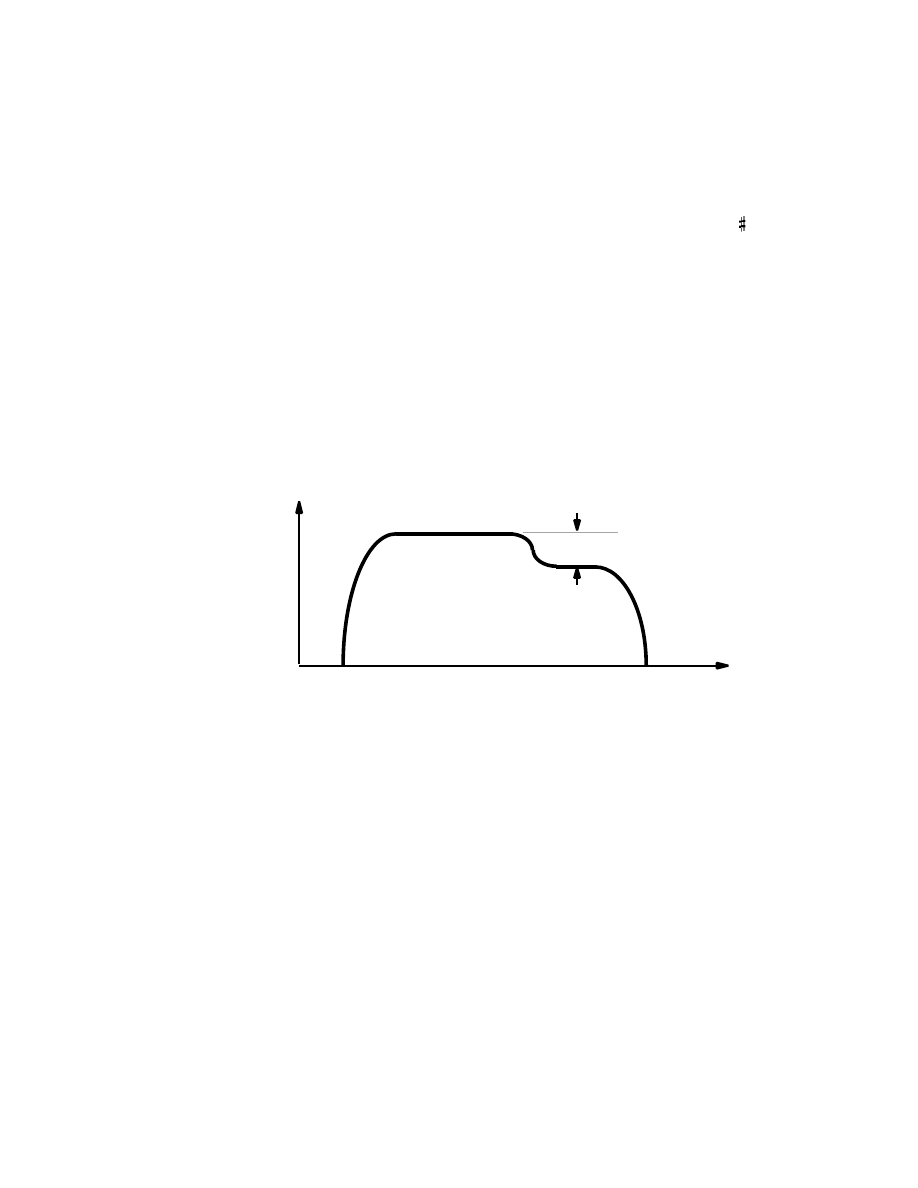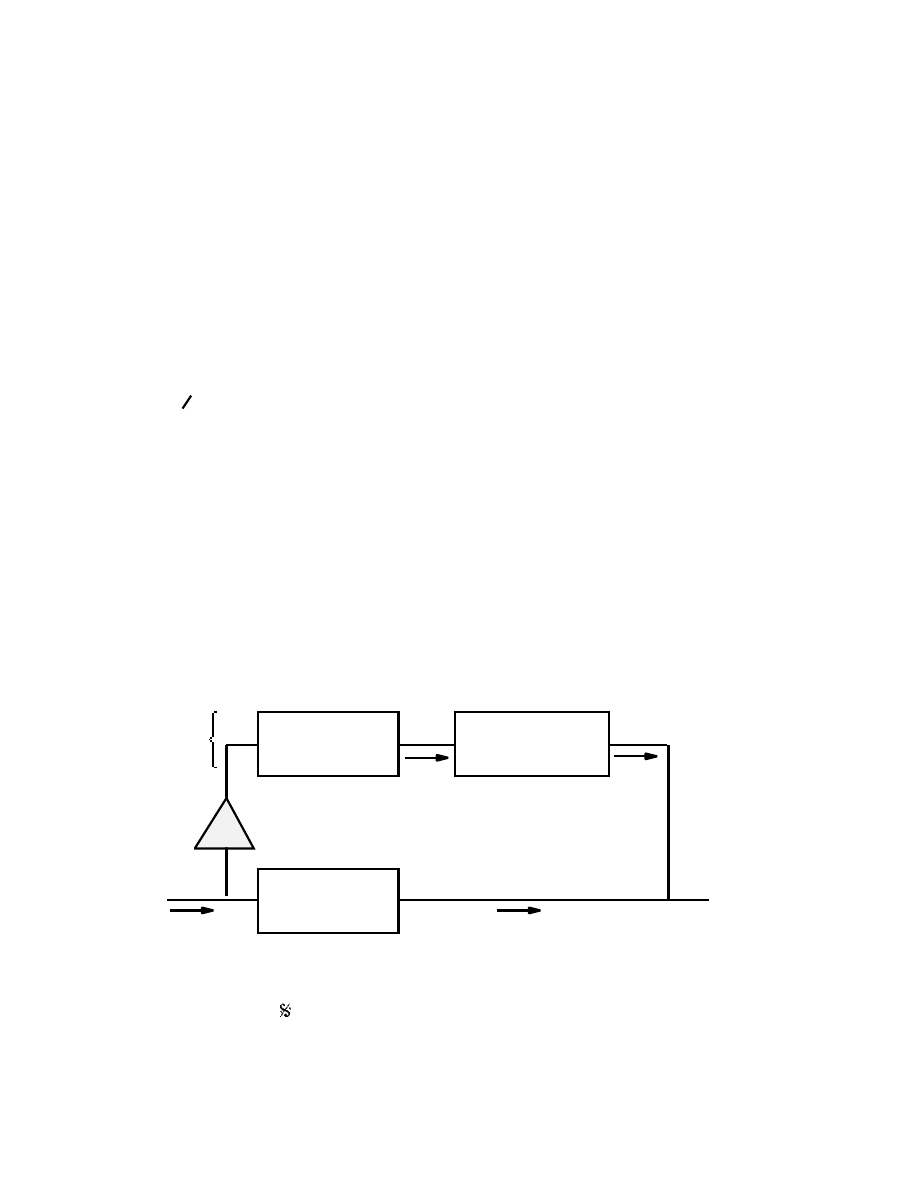ВУЗ: Казахская Национальная Академия Искусств им. Т. Жургенова
Категория: Учебное пособие
Дисциплина: Не указана
Добавлен: 03.02.2019
Просмотров: 12331
Скачиваний: 6

S
sequential monaural: A single bit stream read from a CD is a really one-channel serial data-
stream, with time-division multiplexing used to interlace the left and right audio channels. See
CD-ROM.
serial: (1) Data transmission whereby all bits are sent one after the other, as opposed to using
a parallel interface where bits are sent in groups. Parallel protocols are more complex than se-
rial and the connectors are more complicated and more expensive, all of which makes it harder
to get the specification implemented correctly among vendors. For this reason, MIDI uses a
serial transmission protocol and specifies a serial interface, even though the transmission time
required is substantially higher than for a parallel protocol. As MIDI files are quite small,
compared with files which contain actual audio or video content, the relative lack of transmis-
sion speed was felt to be a good trade-off for the simplicity of its implementation. (2) Network
connections where devices in the network are hooked up in a line, i.e., one to the next. This is
called a daisy-chain, and is the opposite of a parallel topology.
serial interface: A hardware interface which transmits computer data using a serial protocol.
The connector requires only one transmit pin and one receive pin, plus ground. However, the
time taken to transmit each word is greater than for a parallel interface.
serial port: A connector on a Mac which is used to connect devices which use a serial interface,
such as some MIDI interfaces, and printers.
servo: Short for servomechanism. A control system that uses feedback from an output signal to
compare to a reference signal. The difference between the two is an error signal, which is used
to change the output signal in such as way as to reduce the error. Used to control speeds in
tape recorders and turntables and to position the laser beam in CD players. Negative feedback in
an amplifier is an example of an electronic servo.
session tape: The original recording made during a live playing session.
set-up: (1) The part of a recording session in which the engineer places various instrumental-
ists or vocalists, sets up the microphones, and gets basic sounds through the recording console.
(2) The program chain.
Set-Up: A Universal System-Exclusive message of the non-real-time type which defines a list
of events which are to be carried out a given MTC times by the receiving device, such as event
name, start and stop times, plus effect parameters.
SEU4: See DS4.
seventh: The interval between a note and another that is seven scale steps above or below it.
This will be either ten half-steps (minor seventh) or eleven half-steps (major seventh).
SFI: A file extension specifying Turtle Beach’s SoundStage™ audio format. Typically en-
countered as
FILENAME.SFI
.
S-format: See C-format.
sfx: Sound effects.
Shannon’s channel capacity theorem: The formula,

S
DR
max
=
W log
2
(1
+
SN)
,
where DR is data rate, W is channel bandwidth, and SN is the S/N ratio. It expresses the rela-
tionship between these three variables in digital audio. See also oversampling.
sharp: (1) Higher in pitch, as opposed to flat. In reference to musical scales, sharp ( ) indicates
one half-step higher. (2) In filters, sharp refers to the rapidity with which the response of the
filter falls off in the filter stopband, synonymous with rolloff slope. In general, the sharper the
filter, the greater its phase-shift. See also FIR.
shielded cable: One or more insulated wires covered by a wrapped or braided metal shield.
The wires carry the electricity, while the shield acts as an EMI barrier to the audio signals. See
balanced line.
shelving EQ: A typical layout for semi-pro mixers provides low- and high-shelving equaliza-
tion from a pair of knobs labeled “bass” and “treble” and one semi-parametric midrange band.
The low and high EQ are called shelving because a graph of their response curve looks some-
what like a drawing of a shelf. Any portion of the tone above (in the case of treble EQ) or be-
low (in the case of bass EQ) a factory-preset is boosted or attenuated.
Amplitude
Frequency
Shelf Depth
Shelving
shock mount: A microphone suspension system that prevents mechanical vibrations of the
stand from reaching the mic. Usually made of elastic bands mounted on a metal frame, which
together hold the mic in position without rigid mechanical contact with the stand.
shoot: In film, slang for recording. It is derived from the previous use of optical sound in all
film sound recording, i.e., sound recorded on film.
short circuit: A circuit in which some unplanned event, such as the failure of a component or
a stray piece of metal bridging two live contacts, has reduced the resistance in the circuit, re-
sulting in increased current flow through the circuit. It can be said that a complete short circuit
has zero resistance and consequently infinite current flow, however, AC line voltage will limit
this to either 120V or 240V, which is plenty of current by which to get dead. In anticipation of
these accidents, most devices have fuses or other componentry integral to the device and/or
its power supply which are designed to fail, breaking the circuit, in the presence of abnormally
high voltage.
shortcut: A file on a PC-type computer that is similar to the Mac’s alias feature.

S
shotgun microphone: See gun microphone.
shuttle: To wind the tape on a tape recorder back and forth in order to locate a specific audio
event.
SI: Système Internationale. The international measurement standard known as “metric,” as in
SI Units. See watt.
sibilance: The high-pitched whistling caused by air passing around the teeth, such as is pro-
duced by saying certain letters: f, s, t, x, or soft-c. Most sibilance occurs in the 5-10kHz region.
See de-esser.
Side: (1) Any master tape of one song, whether recorded for inclusion in an album, or as the
A- or B-Side of a single. Always capitalized, Side is used in recording contracts, so precise
definition is important. (2) In the AFTRA Code of Fair Practice, a Side is a master tape of no
more than 3
1
2
minutes. If the total length of the song is longer than that, AFTRA singers
receive additional payment.
side-addressed: See end-addressed.
sidebands: (1) Frequency components outside the natural harmonic series, generally intro-
duced to the tone by using an audio-range wave for modulation. See AM, FM. (2) Elements of
a high-frequency carrier signal created when the data/voice signal is modulated with the car-
rier signal, as in FM synthesis. The new sets of partials generated by the modulated carrier give
the tones a timbre other than that of the original sine wave.
side chain: A circuit which measures how strong the input signal is which is being modulated
by a compressor. This information is then used to control the gain of the circuit output. The
compressor will behave differently, depending on whether the side chain responds to average
signal levels or to absolute signal peaks. In the example below, for Dolby B-type companding,
the side chain feeds any signals above 3kHz to the compressor:
Side Chain
Signal
Flow
Highpass
Filter
IN
OUT
•
•
Side
Chain
Compressor
Lowpass
Filter
?
< 3kHz
sign: A musical symbol ( ) indicating a particular place in the music, e.g., D.S. (Dal Signo),
meaning “play from the sign.” D.S. (S.R.) means “play from the sign without repeats,” and
D.S. (C.R.) means “play from the sign with repeats.”

S
signal: (1) The desired portion of electrical information, i.e., the information content of any
transmission medium, i.e., the part of the waveform that is not noise. (2) A generic name for any
one of a number of forms (magnetic orientation, voltage) which audio may take in the program
chain.
signal entropy: A condition caused by audio data which is characterized by frequent tran-
sients, causing a compression algorithm to poorly encode data. If the signal is compressed be-
fore encoding, the data compression will be much more effective, with less effect on the audio.
Signal entropy is not a problem for ADPCM-type compression algorithms.
signal generator: A test instrument that produces one or more of the following types of wave-
forms through a wide range of frequencies: sine wave, square wave, sawtooth, etc. See Ap-
pendix C.
signal ground: Each component of a sound system produces its own internal ground. This is
called the audio signal ground of the device. Connecting devices together with cables can tie
the signal grounds of the units together in one place through the conductors in the cable. See
ground loops, chassis ground.
signal processing: The modulation of an audio signal in a generally desirable way by any de-
vice inserted into the audio chain.
signal processor: See processor.
signal-to-noise (S/N) ratio: Also abbreviated SNR. The ratio, expressed in dB, between the
signal and the noise. To have good dynamic range, there must be a good S/N ratio so that the
softest signals are not overshadowed by noise. There is approximately a 6.03dB increase in
dynamic range per word-bit increase in a digital system; the S/N ratio can be expressed by:
S/N ratio = 20 log (number of quantization increments)
Bits
Increments
S/N ratio (dB)
8
256
54
14
16,384
90
16
65,536
102
20
1,048,576
120
A live musical performance needs a dynamic range of at least 70dB, or a minimum of 14 sig-
nificant bits. See noise, bit depth.
simple time: See time signature.
simulDAT: A DAT recording made during a Telecine transfer in which the production audio
is transferred to a DAT whose timecode matches that of the videotape.
simul-sync: See sel-sync.
sine wave: The waveform of a pure alternating current or voltage. It deviates about a zero point
to a positive value and a negative value, consists of a single frequency and has a musical pitch,
but a neutral timbre. Audio-range sine waves contain only the fundamental frequency, with no
overtones and form the building-blocks for more complex sounds which are combinations of
sine waves. Sub-audio sine waves are used by an LFO to modulate other waveforms to produce
vibrato and tremolo. Also called a sinusoid. See Fourier analysis.

S
single-ended noise reduction: Single-ended NR systems work on playback only. Analog
systems work by combining dynamic filters with low-level expanders so that the signal level de-
cays, high frequencies are progressively filtered out. At very low levels, the expander acts as a
soft gate to clean up pauses. Digital systems are more complicated and use a split-band ex-
pander. See noise reduction.
Single Note Retuning Message: A Universal System-Exclusive message of the real-time type
which is intended to provide a performance control over the tuning of an individual note.
single-stripe: Magnetic film which is coated with oxide, containing a single audio track.
single-system sound: A way of producing sound for motion pictures where the sound is re-
corded directly onto the film in the camera at the time of shooting. Sound and picture are thus
on a single strip of film from the start, with image and sound in projection sync with each
other. Used primarily for news and sports where the relatively limited-fidelity of single sys-
tem cameras can be tolerated. Cheaper than double-system sound, but also less flexible. Video
is, by definition, single-system sound, but may be used as a double-system if a separate audio
recorder is used during filming.
six-channel mix: A nomenclature used for an audio-only surround-sound mix, more generally
referred to as 5.1 which can refer to either audio-only or audio-for-video.
six-mix: See six-channel mix,5.1.
sixth: The interval between a note and the one six scale steps above or below: either eight half-
steps (minor sixth) or nine half-steps (major sixth).
skew: A deflection or dislocation of the proper path for magnetic tape as it passes over a mis-
aligned tape head, guide, or roller.
slapback: (1) An unwanted and distracting echo caused by a reflective surface in any envi-
ronment, e.g., a large window in a recording studio, a cement wall at a concert venue. (2) A
tape delay and the slap echo it creates. See delay line.
slap echo: The single repetition of a signal at a fixed time delay to simulate an echo from a sin-
gle reflecting surface, as opposed to a multiple echo from a time delay, where the delayed signal
is repeatedly fed back into the delay input. The sound is repeated once or twice only, with a
short delay of 40-60ms.
slate: To identify the various takes in a recording session by announcing the take numbers
and recording them on one track of the tape. Slating and the notes taken at the time of re-
cording are important once tape editing begins, otherwise it would be almost impossible to
find any particular take.
slave: An audiotape or videotape transport, motion picture projector, magnetic film recorder
or dubber whose movements follow the movement of a single master transport, accomplished
electronically by using, for example, SMPTE timecode, or electromechanically by linkage of
sprocketed machine motors to provide identical movement of all sprocket drives.
slew limiting: The effect which occurs when the input signal amplitude would require the
output to change faster than the maximum slew rate of the device.